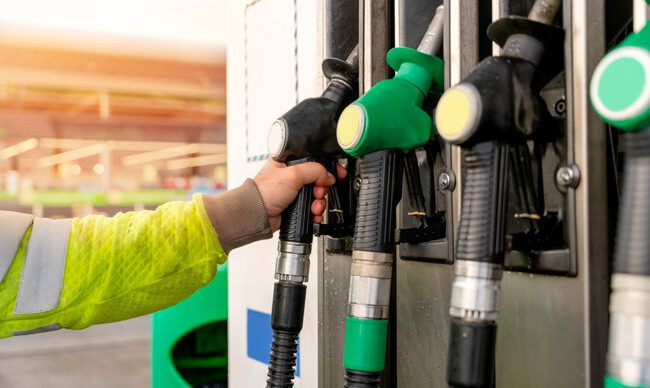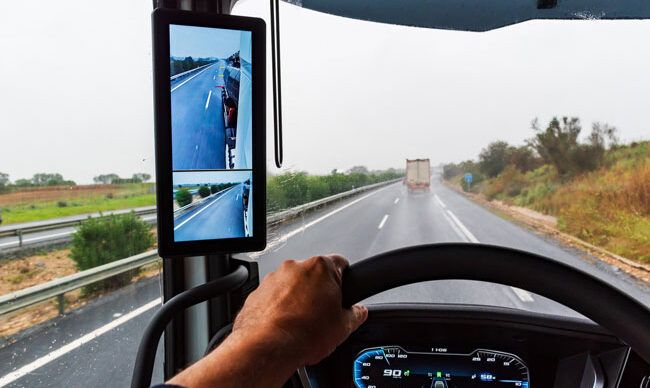
Fleet managers and business owners are constantly looking for ways to reduce costs while maintaining quality work or delivering superior service. One of the easiest ways to rein in fleet costs and boost cash flow is through effective fuel management — especially when you consider that gas and diesel make up one of the largest portions of any fleet-dependent company’s budget. If you’re looking for ways to improve fuel management and reduce fuel costs, start with fleet fuel cards.
One of the easiest ways to rein in fleet costs and boost cash flow is through effective fuel management.
Using Fuel Cards for Fuel Management
Fuel cards are great for simplifying fuel payments and consolidating fleet-related expenses. These payment methods are similar to credit cards in function. However, they offer several features making them a superior method for paying for fuel.
Most fleet cards include fuel rebates or discounts, advanced security features, purchase controls, automated fuel expense tracking, reporting and integration with telematics. Let’s look at how each can help a fleet spend less on fuel.
Fuel Rebates and Discounts
Fuel rebates are one of the most appealing features of fuel cards. Users get a set rebate amount applied to their monthly statement for every gallon they purchase. It’s easy to see how paying less at the pump provides businesses with savings on fuel expenses. But fuel discounts are only one way to yield direct savings.
Some business gas cards, like the WEX Fleet Card, offer more than fuel discounts. Such cards provide users access to national account pricing. This results in discounted prices on hotels, parts, service, tires, maintenance and more. These savings are particularly valuable for small businesses that otherwise would not have access to these discounts.
With all your fleet expenses on one account that also offers savings on those same expenses, you’re bound to spend less.
Protecting your Purchases with Extra Security
Two features of fuel cards that enhance fuel transaction security are personal identification number (PIN) protection and real-time monitoring.
PIN Protection
Fuel cards typically come with PIN protection. This feature requires drivers to enter a personal identification number, or PIN, before completing a transaction. By enforcing PIN protection, businesses can prevent unauthorized individuals from using fuel cards and reduce the risk of fraud.
Real-time Transaction Monitoring
Real-time transaction monitoring is game-changing for fleet management. When you use a fleet card, your purchase details are tracked as they happen. This allows businesses to monitor fuel purchases as they occur. Fleet managers always know who is spending how much and on what. By monitoring transactions in real time, you can quickly identify any suspicious or unauthorized transactions.
Purchase Controls and Fuel Savings
Fuel cards offer extensive control over purchases. Fleet managers can set transaction limits, helping drivers and employees adhere to a company’s fuel spending policy. These purchase parameters include spending limits and product restrictions.
Spending Limits
Setting spending limits helps control the amount of fuel that can be purchased. You can set limits to help control:
- Volume of fuel per transaction.
- Dollar amount per transaction.
- Number of transactions in a given time frame.
- Time of day or days of the week a card can be used.
Reducing excessive or unnecessary purchases across an entire fleet is a great way to reduce fuel spend.
Product Restrictions
Fuel cards can be set to restrict purchases to specific fuel types or products, such as gasoline versus diesel or unleaded versus premium. By using product restrictions, businesses can ensure fleet cards are used only for authorized fuel types.
Automated Fuel Expense Tracking and Reporting
Since all your transaction data is recorded in real time, your fuel expense tracking is completed automatically. With no need for fuel expense reporting, drivers are freed up to spend more time driving. Since all your information is housed in your fleet card dashboard, analysis is easy — especially with the reporting capabilities provided by a fleet card.
Transaction Analysis
Fleet card reports provide businesses with detailed transaction data, including information on fuel purchases, locations and amounts. By analyzing transaction data trends, companies can identify patterns in fuel consumption, enabling them to make informed decisions about optimizing fuel efficiency and reducing costs.
Comparative Analysis
Comparative analysis involves comparing fuel consumption data across different vehicles, drivers or time periods to identify outliers and areas for improvement. The custom reporting features of fleet cards make this easy. If you want to compare certain vehicles, drivers or routes, you can customize your reports based on your specific desires or needs.
Telematics and Fleet Cards

Integrating telematics with a fuel card can lead to even greater fuel savings and operational improvements. Telematics systems use GPS and onboard diagnostics to provide real-time data on vehicle performance, driver behavior and more.
Integrating telematics with a fuel card can lead to even greater fuel savings and operational improvements.
Vehicle Monitoring
Telematics monitors vehicle performance in real time, including fuel consumption, engine idling and maintenance needs. By monitoring vehicle performance, you can identify opportunities to improve fuel efficiency and reduce fuel costs. Alerts can also be set to notify managers of shifts in engine performance so maintenance needs or potential issues can be addressed before they become worse.
Driver Monitoring
Combining a fleet card with telematics systems helps to monitor driver behavior. The onboard diagnostics of telematics tracks speeding, harsh braking, excessive idling and more. By monitoring driver behavior, companies can identify driver training and coaching needs. Safer and more efficient driving is proven to reduce fuel consumption.
Route Planning
Routes with heavy traffic, excessive stops or construction can negatively impact fuel economy. Telematics and GPS systems can help optimize routing by providing real-time traffic updates and alternative route suggestions. Through route optimization, businesses can minimize fuel consumption and reduce the time spent on the road, leading to cost savings and improved efficiency.
Fuel Cards for Fuel Savings
Fuel cards are loaded with fuel savings opportunities. Leveraging fuel rebates and discounts leads to savings on fuel and fleet-related expenses. Enhanced security helps keep your assets secure. Purchase limits, combined with fuel reporting and telematics, help rein in spending and identify other opportunities for cutting fuel costs.
Ask yourself: “Am I using my fleet fuel card to its full potential?” Learn more about how a WEX fleet card can help you reduce your fuel costs.